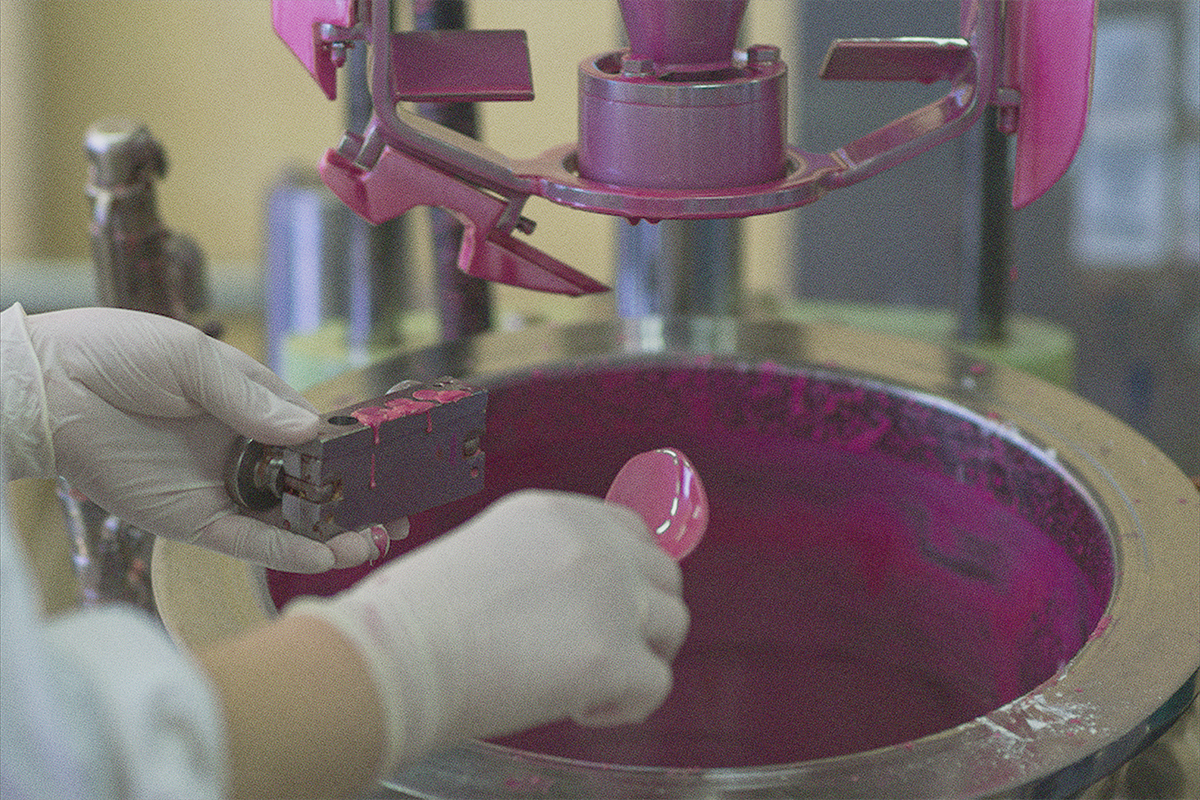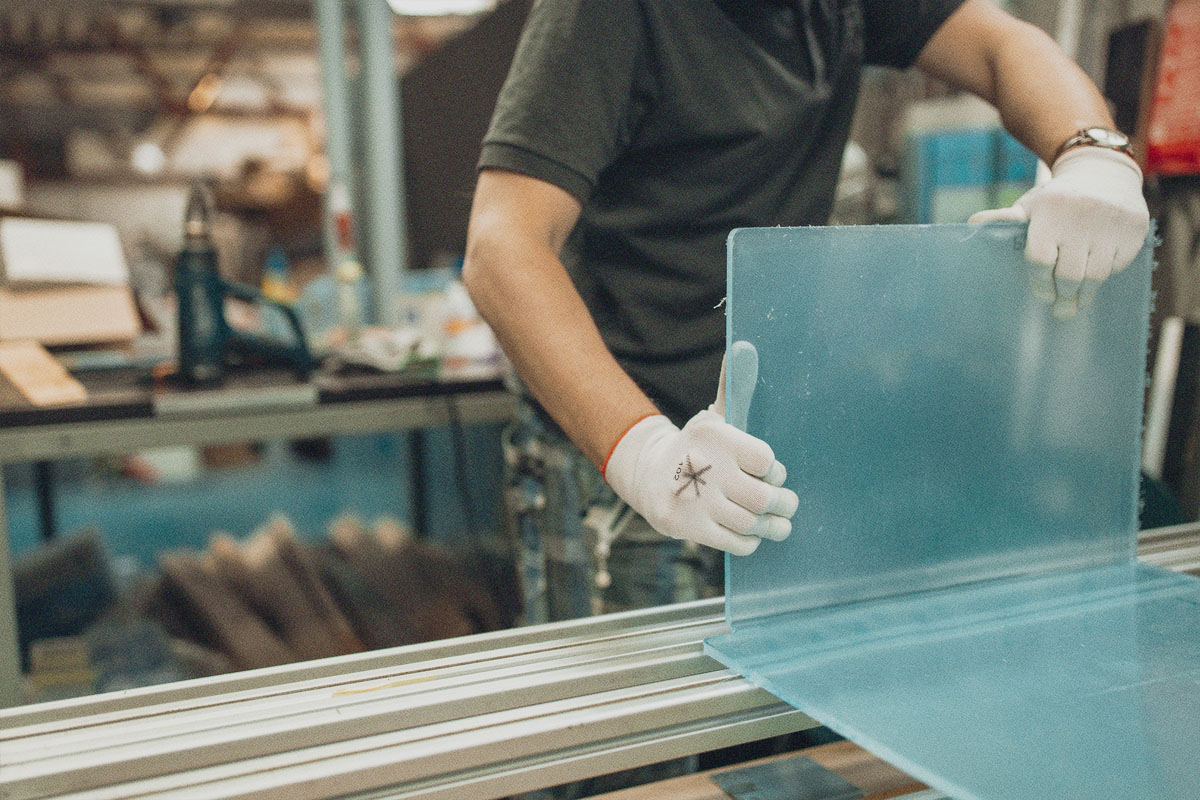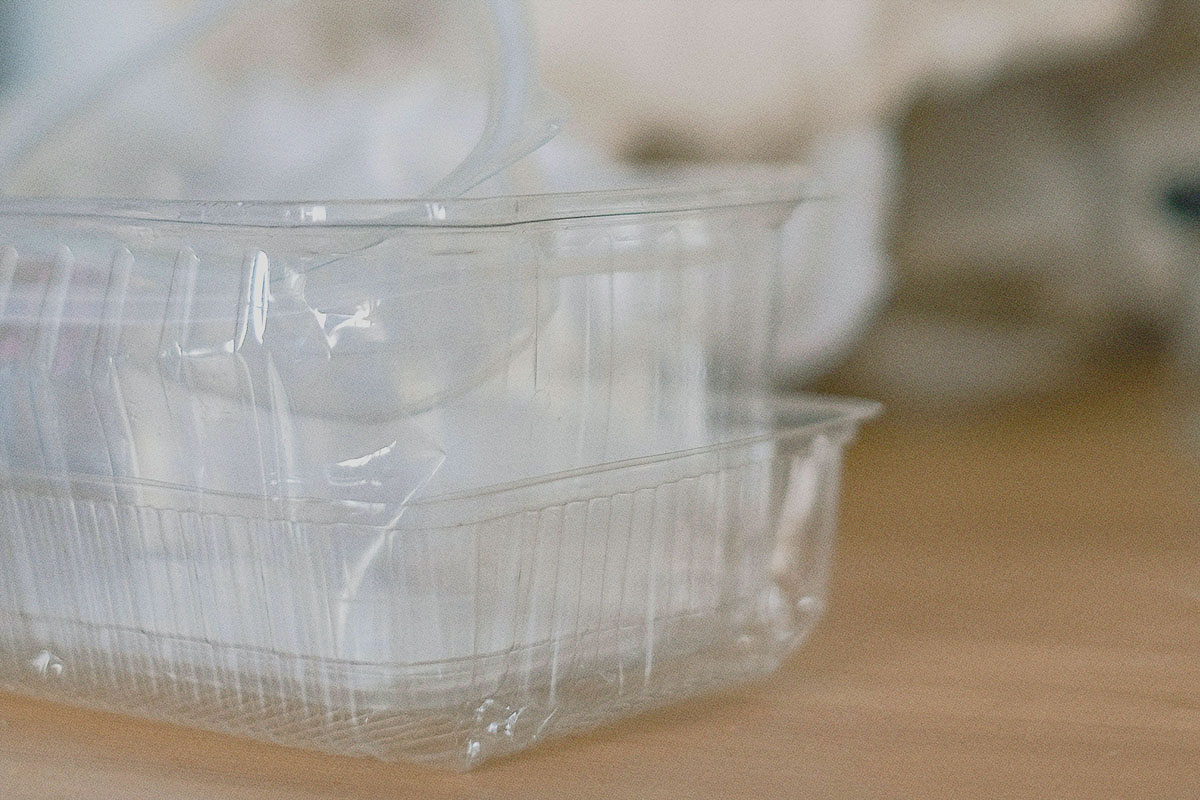 READ HABITABLE’S NEW REPORT
READ HABITABLE’S NEW REPORT
HBN and Perkins&Will have released a second report aimed at transforming the way project teams select sustainable, low-carbon products. Building on the first report titled “Embodied Carbon and Material Health in Gypsum Drywall and Flooring,” a second report investigating the intersection of carbon and material health is titled “Embodied Carbon and Material Health in Insulation”.
Insulation is a unique product category that can help reduce a building’s operational carbon emissions by optimizing performance, lowering the energy required for heating and cooling. Those same materials can also negatively impact the environment by releasing greenhouse gasses throughout their life cycle. Insulation can also contain toxic chemicals that migrate into interior spaces. This report provides guidance for designers and architects to choose the best materials that takes materials health and embodied carbon into consideration.
Key Highlights from the reports include:
- Optimized Products for Material Health and Embodied Carbon: The reports show that products improving material health and embodied carbon are available across all the examined product categories: flooring, gypsum drywall, and insulation.
- Screening for Optimized Product Types: Professionals are advised to first screen for optimized product types before selecting specific products. This approach helps teams capitalize on the fact that the biggest improvements can be made by selecting different product types within a product category.
- Navigating Potential Contradictions: Acknowledging that embodied carbon and material health considerations are sometimes contradictory, the reports emphasize the importance of reviewing the provided guidance to make informed decisions.
The reports represent a significant step forward in sustainable design practices, offering actionable insights that empower professionals to make environmentally conscious choices without compromising on carbon or health priorities.

Teresa is Habitable’s Chief Research Officer, leading our research strategies.
Almost every day, news headlines warn us of the dangers of ‘forever chemicals’, known as PFAS, used in the manufacturing of consumer and industrial products. They’re being found in our water, air, fish, and soil across the U.S. and around the globe, and our body tissues, showing up in almost every person in the US. A report by Habitable (formerly Healthy Building Network) examines the presence of PFAS in residential and commercial paint products—and the urgent need to stop their use.
We recently spoke with Teresa McGrath, chief research officer, and the report’s lead author, to discuss the team’s research findings. She shares what industry professionals can do to avoid human exposure, and discusses why—and how—manufacturers can eliminate them from paint formulas altogether.
HABITABLE:
Before we jump into the details of this groundbreaking report, can you share a little bit about yourself and your expertise as it relates to chemical sciences and paint products?
TERESA MCGRATH:
My background is in chemistry and toxicology. My entire career I have focused on green chemistry: the idea of using chemistry to help meet sustainability goals. Before joining Habitable, I led the chemical management program for Sherwin-Williams, one of the largest paints and coatings companies in the world. In that role, I focused on hazard reduction and transparency, and helped business units in meeting sustainability goals. As chief research officer at Habitable, I lead a team of researchers on studies that seek to better understand hazardous chemicals that may be present in or used to make building materials, as well as putting forward recommendations and best practices to reduce or eliminate their impacts.
H:
Habitable’s most recent report delves into the presence of PFAS chemicals in paints. Officially named perfluoroalkyl and polyfluoroalkyl substances–PFAS–are commonly called ‘forever chemicals’. Can you tell us what forever chemicals are and why they’re so harmful?
TM:
PFAS refers to a class of chemicals with over 10,000 different structures. All PFAS are very persistent chemicals. The fluorine-carbon bond of these synthetic chemicals is very difficult to break and this means that they don’t break down on their own once they get into our bodies or into the environment. Given this persistence, they are often referred to in the media as ‘forever chemicals’. These chemicals can also be bioaccumulative, meaning they build up in our bodies, and can be toxic. We don’t yet know all of the potential harm because most of these chemicals have not been tested, however a host of negative health effects have been associated with PFAS including cancer, liver damage, decreased fertility, developmental delays in children, and disrupting the natural hormones in our bodies.
H:
Can you give us an idea of the scale of this problem and why is it so important that we phase PFAS chemicals out of paint products?
TM: Architectural paints coat the inside and outside our homes, schools, and workplaces, making PFAS in paints a potential exposure concern for everyone from those who manufacture and apply the paints to those who occupy painted spaces. They’re a health and environmental concern throughout their lifecycle, from cradle to grave. And while we already know some PFAS are linked to increased health risks, we may just be scratching the surface, as some experts have suggested, we may be underestimating the dangers of these widespread chemicals.

H:
As part of this study, Habitable tested numerous different paint products and brands for the presence of toxic forever chemicals. What were the team’s findings?
TM:
We tested 94 paints for total fluorine (TF), and a subset for extractable organic fluorine (EOF), indicators of PFAS.
We selected paint samples across most brands, price tiers, gloss, base, and colorants. Samples represented eight major paints and coatings manufacturers that together have over 65% of the paints and coatings market share in North America. We found that about 50% of the paints tested positive for these indicators of forever chemicals, the detailed list is included in our report. All tested brands had at least one product that tested positive for fluorine, and at least one product that tested negative for fluorine. And while the overall percentage of PFAS present in these products is generally small (less than 1%), there is no amount of PFAS in paint that can be considered acceptable because of their health implications.
We did reach out to paint manufacturers, but none could provide us with more comprehensive information on the definitive purpose and use of these chemicals in their products. The likely assumption is they’re using these forever chemicals as a surfactant, meaning they are acting as a stabilizer helping the paints to spread and coat more evenly.
H:
According to the report results, there are numerous paint products on the market today that don’t use these harmful additives. Are these chemicals even necessary and is removing PFAS chemicals from paint a relatively easy thing to do?
TM:
While surfactants are critical to a paint formulation, there are other PFAS-free surfactants that are used for the same purpose that are safer, objectively, from an environmental and human health perspective. Half of the paints we tested didn’t show evidence of PFAS, so we know that it’s possible to formulate paint products without it.
H:
What actions should the paint industry and their suppliers take in light of these findings?
TM:
Paint manufacturers need to phase-out all use of intentionally-added PFAS. When removing forever chemicals from formulations, manufacturers should make sure that PFAS are not replaced with other hazardous chemicals such as alkylphenol ethoxylates (APEs).
To avoid regrettable substitutions and facilitate informed material selection, all alternatives must have full chemical hazard assessments. If a paint company doesn’t know the full hazard profile of a chemical or surfactant, they should consult a toxicologist to evaluate that chemical. The ChemFORWARD platform offers tools and data to help companies find safer alternatives.
In addition, manufacturers should publicly disclose all ingredients in their paints, including PFAS use at any concentration. It should be standard practice for all paint manufacturers to tell the public what they’re putting in their products, along with the toxicity profile of every ingredient.
At a high level, industry players can support bans on PFAS and regulations that require more ingredient transparency in the paint sector..
H:
And lastly, how can you source PFAS-free paint products if you’re a consumer, building professional or specifier?
TM:
All this information might feel a little overwhelming, but we have developed two tools to make it much easier. And the good news is, all of the brands we tested had at least one option that tested negative for fluorine. Specifiers can refer to Habitable’s InformedTM paint guidance resource to select safer paints, as well as our downloadable form that can be used to ask manufacturers for a paint that meets the transparency and material health attributes specified by Habitable. By following these tips you can source paint that is free of forever chemicals, and also meets other environmental best practices such as low VOC content and emissions.
Buyers can also advocate for paint companies to do better. Ask paint manufacturers to provide public disclosure of all intentionally added ingredients, using the Health Product Declaration (HPD) or Declare label.
Overwhelming evidence suggests our health and well-being are significantly impacted by the conditions in the environment where we are born, live, learn, work, and play, with some suggesting that our zip codes are better predictors of health than our genetic code.
Also referred to as social determinants of health , these conditions range from access to and quality of education, transport, and health care services to housing conditions and the toxics and pollutants we are exposed to in the neighborhoods we live in.
While definitions may vary around what these conditions are and which should be prioritized, there is general consensus that:
- These conditions exist because of decision-making processes, policies, structures, and practices designed and implemented by humans;
- These conditions create inequities in health, disproportionately impacting low-income families, families living with incomes below the federal poverty level, and people of color, and;
- Cross-sector collaboration is needed to deliver the highest standards of health for all, with special attention given to the needs of those who are at greatest risk.

In alignment with efforts tackling the root causes of health inequities, Healthy Building Network (HBN) entered into a partnership with United Renters for Justice (IX), a nonprofit working to transform the Minneapolis housing system, to reduce tenant exposures to toxic chemicals used in building products. Funded through an Environmental Assistance grant by the Minnesota Pollution Control Agency (MPCA), this collaborative project prioritized toxic exposure reduction in areas designated to be of environmental justice (EJ) concern by the MPCA. EJ concern areas include tribal land and census tracts with higher concentrations of low-income residents and people of color – communities that are disproportionately impacted by toxic chemical exposures and other forms of pollution.
This collaboration provided the unique opportunity to embrace the perspective of tenants in the co-creation of resources to help them make informed decisions about the products used in their housing units and common areas. Specifically, this meant designing resources that would leverage IX’s organization and mobilization skills as well as the structure of a recently established tenant cooperative, “A Sky Without Limits.” Also, it meant increasing information accessibility, for example, through the use of non-technical language and making the resources available in both English and Spanish.
Tenant organizations and other stakeholders can access HBN’s healthier building product guidance at informed.habitablefuture.org and by watching this 10-minute seminar video:
Watch the Seminar (English)
Ver el Seminario (Español)
This high-level, 10-minute recording can be used to educate the general public (e.g., tenant meetings) about the importance of avoiding toxic products. It begins by breaking down myths and misconceptions around the perceived hazards and safety of natural and synthetic chemicals and discusses how toxic products impact individuals and families, especially children, along the lifecycle of products.
By empowering the people most affected by toxic chemical exposures to advocate for and create change in their living conditions, this project creates avenues for creating a safer environment for all. Anyone who influences product purchasing decisions – including manufacturers, building owners, managers, developers, architects, investors, policy makers, and consumers – has the power and responsibility to reduce health inequities for those using or exposed to those products every day. This includes residents, workers, installers, and the communities that surround the facilities where these materials are processed and disposed of. By making material health a priority in your decision-making processes, you’ll be joining efforts to tackle the root causes of health inequities in communities around the world. Visit informed.habitablefuture.org to learn how our building product guidance can help you make better material choices.

Project teams want buildings that are healthy for people and the planet. Two sometimes competing criteria to evaluate the sustainability of building products are embodied carbon and material health.
For this case study, Perkins&Will partnered with Healthy Building Network to identify key drivers of embodied carbon and material health by looking at specific examples of product categories frequently specified in building projects. Using flooring and drywall as examples, this study identifies some examples of where paths toward low embodied carbon and safer materials align and where they conflict.
The goal of this case study is to translate the learning from embodied carbon assessment tools and material health assessment tools into actionable guidance for manufacturers, project teams, and green building programs that will allow them to optimize decisions and promote and select healthier, low-carbon products that advance a circular economy.
Who do you think would win at the sustainability tug-o-war? Team safer materials or team low-carbon products?
Healthy Building Network (HBN) has often heard these two issues framed as a competition–a false choice. Instead, we know that these two powerhouses must work together for optimal results.
In 2022, HBN and Perkins & Will published a study highlighting building products that can do just that: optimize material health and lower their carbon footprint. This study identified key drivers and paths towards low embodied carbon and safer materials as well as when to consider and optimize both at the same time. To illustrate this point, we plotted an actionable path for project teams using flooring products as an example.
Team Low-Carbon Products: The embodied carbon of building materials contribute a whopping 11% to global carbon emissions.1 Most of these emissions happen before that product even gets installed. Additionally, the poorest countries and regions are those most impacted in terms of damage and loss of life by the effects of climate change.2 “That 11% might sound small compared with the impact of operational energy (28%), but for new construction, embodied carbon matters just as much as energy efficiency and renewables. That’s because the emissions we produce between now and 2050 will determine whether we meet the goals of the 2015 Paris climate accord and prevent the worst effects of climate change,” explains a BuildingGreen report.
Team Safer Materials: We spend 90% of our time indoors, and hundreds of industrial chemicals are found in our indoor spaces— in the dust, in the air we breathe, and in our bodies.3 The health impact of building materials are not limited to their time in use in the building, they often occur during manufacturing, installation, and at the product’s end of life. People living in close proximity to industrial facilities experience persistently worse air quality than average and exposure to industrial pollutants disproportionately impacts people of color.4 Another report suggests man-made pollution has exceeded the Earth’s safe operating boundaries.5 “Transgressing a boundary increases the risk that human activities could inadvertently drive the Earth System into a much less hospitable state, damaging efforts to reduce poverty and leading to a deterioration of human wellbeing in many parts of the world, including wealthy countries.” Professor Will Steffen, researcher at the Centre and the Australian National University, Canberra.6


Reducing toxic chemical use and the emissions associated with building materials NOW is a vital sustainability strategy for any project team.
The Research:
To identify the key drivers of embodied carbon and the key opportunities to reduce embodied carbon for each product type we read Environmental Product Declarations (EPDs), reviewed literature and data compilations, and conducted manufacturer interviews. The hazards associated with flooring products, the chemicals used to make those materials and the hazards associated with the chemicals used to install those products were collected using InformedTM product guidance and hazard data in the Pharos database.
Embodied Carbon:
Our research concluded that flooring products’ embodied carbon impacts are mostly associated with the raw material supply. The biggest opportunities to reduce embodied carbon in flooring comes from choosing a different product type that uses less impactful raw materials as well as products with longer service life. Carpet was consistently the most impactful product type due in part to its short service life. Plant-based flooring products, such as wood and natural cork, were consistently the least impactful.
Material Health:
Not surprisingly, the biggest opportunities to avoid chemicals of concern in flooring come from choosing a product type with typically fewer chemicals of concern. Products made from plastic, such as vinyl, nylon, or polyurethane tend to use more hazardous chemicals during manufacturing, installation, use, and end of life, than mineral or plant-based products. Selecting a product that is yellow or above in InformedTM color ranking Flooring Guidance, such as wood or linoleum, or even a non-vinyl resilient flooring will minimize the use of hazardous chemicals. Products in the red zone such as vinyl and carpet, should be avoided.
Conclusion:
When we looked at the opportunities to improve embodied carbon and improve material health for flooring we found that they were largely complementary.
- Use flooring with a long service life. Avoid products with a short service life, like carpet, and select a product with a long service life, like wood.
- Choose biobased product types. Linoleum, wood, and cork are all flooring product types that were identified as both resulting in lower embodied carbon and safer in terms of material health.
- If you must use carpet, avoid use of virgin nylon carpet product types. While carpet generally can contain more chemicals of concern than other product types, carpet made with virgin nylon as a generic product type was identified as having the highest embodied carbon within the flooring category.
- Use circular and safe materials. Use recycled content from known sources. Prefer products that have been tested for these chemicals and have below detectable levels or below levels that would be found in virgin resin content for these materials.
These findings highlight the importance of pre-emptive design. Parallel to the way we conduct early modeling for energy or water use, the industry needs to model for embodied carbon and material health. A materials modeling approach–where the entire team is engaged early – before design development or construction development – will enable educated decisions before the design is set. Use HBN’s Embodied Carbon and Material health in Flooring and Drywall report and tools like Informed™ and the Carbon Smart Materials Palette to select typically healthier, low-carbon building product options.
SOURCES
- Architecture 2030. “Why the Building Sector?” https://architecture2030.org/why-the-building-sector/
- United Nations. “The Sustainability Development Goals Report 2019”. 2019. https://unstats.un.org/sdgs/report/2019/The-Sustainable-Development-Goals-Report-2019.pdf
- Goodman, S. “Tests find more than 200 chemicals in newborn umbilical cord blood”. Scientific American. December 2, 2009. https://www.scientificamerican.com/article/newborn-babies-chemicals-exposure-bpa/ Environmental Science Technology. “Consumer Product Chemicals in Indoor Dust: A Quantitative Meta-Analysis of U.S. Studies”. 2016. 50, 19, 10661-10672. https://pubs.acs.org/doi/full/10.1021/acs.est.6b02023
- Chandra, A. et al. “Building a National culture of health. Background, action framework, measures, and next steps. RAND Corporation. 2016. https://www.rand.org/pubs/research_reports/RR1199.html
- Persson, L. Et al. “Outside the safe operating space of the planetary boundary for novel entities” Environmental Science and Technology. 56. 5. 1510-1521. 2022. https://pubs.acs.org/doi/10.1021/acs.est.1c04158
- United Nations. “Scientists Say Planetary Boundaries Crossed.” 2015. https://unfccc.int/news/scientists-say-planetary-boundaries-crossed
Insulation selection has generally focused on prioritizing a product’s ability to reduce greenhouse gas (GHG) emissions from building operation, though increasingly considerations include GHG emissions from a material’s life cycle, from manufacture through disposal (known as embodied carbon).
However, this singular focus on GHGs fails to account for other harmful emissions associated with the life cycle of these materials, including toxic pollution that disproportionately burdens Black, Indigenous, people of color (BIPOC), and/or low-income communities. As billions of pounds of new insulation is being installed in buildings each year, failure to address these toxic impacts will mean that building decarbonization efforts will further entrench environmental injustice.
Healthy Building Network (HBN) joined NRDC and Energy Efficiency for All in an analysis of the life cycle chemical and environmental justice impacts of two popular building insulation materials—fiberglass and spray polyurethane foam (SPF).

The Findings
The analysis found that both SPF and fiberglass release pollution into BIPOC communities over their life cycles, but SPF carries a much heavier pollution burden. The combined population surrounding the facilities that manufacture the key ingredient of SPF has almost double the percentage of Latino people compared to the U.S. overall. These facilities reported releasing an average of about 560,000 pounds of related hazardous chemicals every year and have a history of noncompliance with EPA regulations. Our previous research also found that spray foam has significant hazardous chemical concerns during installation and use in buildings.
Regarding embodied carbon, while the specifics vary, studies (such as here, here, and here) consistently show that closed cell SPF has significantly higher embodied carbon per R-value than fiberglass insulation. Further, SPF is made from almost entirely fossil fuel-derived inputs, with no recovery, reuse, or recycling of the material—necessitating continued extraction and refining of fossil fuels to produce this insulation product. Overall, comparing material health, environmental justice, and embodied carbon impacts between SPF and fiberglass, fiberglass is preferable on all accounts.
However, fiberglass manufacturing still releases hazardous pollution into communities who are disproportionately BIPOC and/or low income, and many fiberglass facilities have exhibited regular noncompliance with EPA regulations. Fiberglass manufacturers can reduce and eliminate such pollution by using less hazardous chemistries. For example, all four U.S. manufacturers reported reduced releases of formaldehyde by changing to safer binder formulations for many of their products between 2002 and 2015.
Why It Matters
As laid out in the Equitable and Just National Climate Platform:
“To achieve our [climate] goals, we will need to overcome past failures that have led us to the crisis conditions we face today. Past failures include the perpetuation of systemic inequalities that have left communities of color, tribal communities, and low-income communities exposed to the highest levels of toxic pollution and the most burdened and affected by climate change. The defining environmental crisis of our time now demands an urgency to act. Yet this urgency must not displace or abandon the fundamental principles of democracy and justice…Unless justice and equity are central components of our climate agenda, the inequality of the carbon-based economy will be replicated in the new economy.”
To truly be part of a just and equitable transition to a clean economy, climate solutions like building insulation must advance the well-being of BIPOC and low-income communities. We recommend that embodied chemical and environmental justice impacts drive material decision-making on par with consideration of GHG emissions.
Your Action Today = Healthier, More Just Future
In general, there are significant opportunities to improve the life cycle of building insulation materials through avoiding hazardous chemicals, implementing circularity, and taking other actions stemming from the principles of green chemistry and environmental justice.
Manufacturers and policymakers should advance transparency about what is in a product, how and where it is made, and the hazardous releases that occur throughout its life cycle. In the meantime, those who choose building materials can start by avoiding hazardous chemicals in a product’s content to help protect not only building occupants and installers, but also others impacted by those hazardous chemicals throughout the supply chain. Our InformedTM product guidance can help you choose safer materials.
All stakeholders–including manufacturers, policymakers, and those who choose building materials–should support the leadership of frontline communities and make changes to their own practice so that all families have healthy places to live, learn, work, and play.
We have been picking on plastics a lot recently (see articles: Addressing the Plastic Crisis: Why Vinyl Has to Go and The Illusion of Plastic Recycling: Neither Just Nor Circular). This is because we believe that typically the best way to avoid hazardous chemicals is to avoid plastic altogether. With this said, we recognize plastics in buildings are currently ubiquitous (see article: Our Plastic Buildings: A New Driver of Fossil Fuel Demand).
So, let’s consider what would need to happen for plastic building products to be considered truly sustainable. Can the plastics industry do better? What are the key opportunities today to do so, and what global policy tools could promote these opportunities? These are among the key questions HBN explored in the development of a pair of case studies for the international Organization for Economic Co-operation and Development (OECD) as part of the Inter-Organization Programme for the Sound Management of Chemicals (IOMC).
Before we jump into the case study findings, first, let’s define plastics. For the purposes of this article, we define plastics to be any polymeric material, fossil fuel based or bio-based. The case studies focused on durable plastic goods, using building materials as an example.
The case studies explored both plastic flooring and plastic insulation with the goal of increasing awareness of environmental and human health impacts of plastic product production at each stage of the lifecycle and proposing policy interventions that can help move the industry toward more sustainable plastics products in general.

What would be defined as a sustainable plastic?
In the report, we created a framework for evaluating what a truly sustainable plastic product would look like. These goals are lofty, and currently no existing plastic building materials meet these goals. However, they provide a pathway towards truly sustainable products.
To be considered a sustainable plastic, a product would have to enhance human and environmental health and safety across the entire product life cycle. It would have to be managed within a sustainable materials management system, and would have to meet the following goals:
- Must be inherently low hazard.
- Hazardous substances are eliminated.
- Transparency in terms of content and emissions exists at every step of the supply chain.
- Full hazard assessments are available on all chemicals.
- Must have a confirmed commercial afterlife.
- Products designed for durability, reclamation, reuse, and recycling.
- Infrastructure exists to support reclamation, reuse, and recycling.
- Materials can undergo multiple cycles of recycling.
- Must generate no waste.
- Manufacturing scrap is eliminated at every step of the production process.
- Scrap from installation is eliminated.
- Must use rapidly renewable resources or waste-derived materials.
Trade-offs examples
The case study explores trade-offs that exist between different material choices.
For a flooring example, a product that is designed to use adhesive to install is typically thinner than one that uses a click tile system to install. These thinner products use less material per square foot and therefore have less chemical impacts associated with manufacturing and less waste at the end of life. However, adhesives may add hazardous substances to the product installation stage. By moving from a click tile product to a glue down product, chemical exposure burdens shift from manufacturing and end of life to the installation stage and use phase.
For an insulation example, a product that is designed to chemically react at the build site, such as spray polyurethane foam (SPF), can allow the insulation to form an air-sealed custom fit. However, SPF is not recyclable, and adherence of that insulation to surrounding materials may also make those materials more difficult to reclaim or recycle. Moving from XPS, EPS or polyiso to SPF may reduce the ability of other surrounding materials to “have a commercial afterlife” in the pursuit of an added performance feature.

Building awareness around these trade-offs enables stakeholders to make informed choices.
Back to reality
Now, back to reality after crafting the characteristics of a theoretical sustainable plastic. The bottom line is that there are no sustainable plastics that exist today, and we are a long way off from that day. Today, project teams need to prioritize which sustainability goals are most important and how to deal with real and significant gaps in understanding and/or data.
The case studies compared only product types made of plastic, but in reality, project teams have a wider variety of materials to choose from in any given product category. HBN’s Product Guidance considers the most commonly used product types within a product category and ranks those product types relative to one another from a chemical hazard perspective. Product types made of plant-based materials or minerals tend to rank higher than plastic products. You can apply the same sustainability goals proposed in this article to non-plastic products.
In project design, the biggest leaps towards more sustainable products from a chemicals perspective often requires consideration of vastly different materials versus making incremental improvements in chemistry for a particular product type. For example, this could mean moving from vinyl to linoleum flooring versus attempting to select the least bad vinyl option.
Check out the full flooring and insulation case studies for examples of how to use these goals to consider and choose the variety of plastic product types you will inevitably be specifying for your next project. Alternatively, challenge yourself to skip the plastics whenever possible. Even selecting one non-plastic product is cause for celebration. Make the swap!

This Women’s History Month, we’re celebrating an incredible leader in the green chemistry and healthy materials space: our very own Teresa McGrath! Teresa is Habitable’s Chief Research Officer, leading our research strategies.
Prior to working at Habitable, Teresa led the Chemical Management Program for Sherwin-Williams, the largest paints and coatings company in the world, where she focused on hazards reduction and transparency and assisted business units in meeting sustainability and green chemistry goals. She also spent nine years as the Senior Managing Toxicologist at NSF International’s Green Chemistry Programs, and two years at the Environmental Protection Agency in the Design for the Environment (DfE) Branch of the Office of Pollution Prevention and Toxics (OPPT).
We caught up with Teresa to learn why she’s a champion for safer chemicals and healthier products and to get her perspective on the industry today.
HABITABLE:
What got you interested in working in sustainable products and clean chemistry?
TERESA MCGRATH:
It all starts with my family. Specifically my father – who would never identify as an environmentalist – but through his actions taught me to care for those who are most vulnerable and to take care of our planet. For example, more than once I witnessed my dad giving CPR to an injured animal that one of our dogs had mangled. In grade school I disgusted my friends by pulling carrots out of a peanut butter and jelly coated baggie my father had reused (this was before reusable bags were a thing!).
In college I did a research project on how to remove pesticides from drinking water using a biocatalytic filter method. It took me until the end of the project to ask myself “Wait, why is this pollution in our drinking water to begin with? Why are we using chemistry in such an inefficient, clumsy way?” After a little digging I stumbled on the Twelve Principles of Green Chemistry, authored by Dr. Paul Anastas and Dr. John Warner. These principles are centered around using chemistry to prevent pollution rather than create it, to make efficient use of resources down to every atom, to avoid waste. This was an inspiring moment for me.

I decided to pursue a graduate degree in chemistry that focused on Green Chemistry. At the time the only graduate program focused entirely on “Clean Chemical Technology” was in the U.K. at University of York. Off to England I went, and I have worked in the field of Green Chemistry for my entire career.
H:
What has surprised you the most about working in this field?
TM:
I have worked in government, NGOs, and industry. I think what is surprising is how much these stakeholders have in common and how most people want the same things when it comes to human health and the environment. Most people want (to make, use, or buy) safer products that work well and they can afford. It is this alignment that we can all use to make progress.
The most exciting projects in my work experience were those that harnessed input from different stakeholders with different perspectives. For example, in 2017 Valspar invited NGOs and academics who fought against the use of the endocrine-disrupting chemical bisphenol A (BPA) to help them design and test alternatives to BPA for use in food packaging.
We can all learn from each other, and these moments of collaboration are critical to enable market changes toward products that are safer for human health and the environment.
H:
Who has inspired you along your journey?
TM:
In addition to Dr. Anastas and Dr. Warner, I am grateful to Dr. Lauren Heine, who I met at a Gordon Green Chemistry conference when I was in graduate school and has been a friend and mentor to me ever since. Dr. Heine is a leader in the field of green chemistry, green engineering, and sustainable business practices.
I first met Lauren when she was the Director of Applied Science at Green Blue Institute, where she developed the CleanGredients database in partnership with the U.S. Environmental Protection Agency (EPA) to help cleaning product manufacturers find safer alternatives. At Clean Production Action, she co-authored and led the development of the GreenScreen for Safer Chemicals, a method for comparative chemical hazard assessment. She has also worked as Director of Science and Data Integrity at ChemFORWARD, where she co-created a harmonized chemical hazard assessment methodology that will not helps people avoid chemicals of concern, but also identify safer alternatives. She serves on various advisory boards and committees all over the world to share with the rest of the world a bit of the brilliance whenever she can.
Lauren taught me that collaboration is one of the most important tools to inspire change. She has an unique ability to build connections and relationships with every project she is involved with. I aspire to approach my work with this same focus.
I also credit Lauren with helping me land my very first job out of graduate school at the EPA despite the fact that I handed her a printed resume on scented paper (long story!).
H:
What are you excited about?
TM:
When I talk to project teams about how they find and select healthier products for new construction or retrofits, I often hear that they rely on disclosures like Health Product Declarations (HPDs) or Declare labels, or ecolabels such as Greenseal or Cradle to Cradle certifications, or most often they rely on manufacturer claims about the product.
I’m feeling optimistic that there has been more traction with manufacturers using these great transparency programs. There are a limited number of products on the market today that carry disclosures, and even fewer that have ecolabels. Real estate teams often feel stuck when the product they want to select is not yet disclosed. Also, because a product carries a disclosure or an ecolabel does not mean it is the best choice to avoid hazards for that product category.
I believe that there is a lot of value in disclosures and product certifications and that they play a critical role in our ecosystem. And, I believe the most powerful way to achieve safer products is to start BEFORE relying on those product disclosure tools. Project teams can take advantage of product type guidance to select products that are typically safer than others – all before ever selecting from an individual manufacturer.
Habitable’s InformedTM product guidance is informed by our 20+ years of building materials research. Guidance for individual product categories are generated by analyzing everything we know about a product category, including the way the products are made, the hazards associated with the product content, and end of life options for different product types. The reason I am so excited about this resource is that it summarizes a LOT of technical information into a simple, easy to use format that can be applied easily to both benchmark current practices and select typically safer products for projects, and even help document the powerful impacts of choosing safer materials on a project.
H:
What advice do you have for up-and-coming leaders in this space?
TM:
Don’t be afraid to reach out directly to professionals to learn more about their jobs. Ask what experience they are looking for in candidates, what their day to day looks like, and even directly ask about open positions or internship opportunities. Once you are in a role, actively look for opportunities to meet people within and outside of your organization. By expanding your network you learn different perspectives and build your capacity to collaborate on your next project. I can say from experience that you can make an impact from many different vantage points. We need young energetic leaders in NGOs, government, industry, and academia who are passionate about making the world a better place!
Healthy Building Network (HBN) is excited to welcome Monica Nakielski as our new Board Chair!

“I was excited to join an organization having the impact that HBN does. Our influence and impact spans across industries and the globe with the science and resources we create,” Monica said. “I was interested in networking with other leaders in this space while contributing to the conversation and bringing a healthcare perspective to the table.”
A longtime champion of healthy buildings and spaces, Monica is the former Vice President of Sustainability at Advocate Aurora Health. She has over 15 years of experience as a sustainability practitioner and consultant to Fortune 500 organizations, governments, institutions, and nonprofits, with a focus on health care, hospitals, and health systems.
Monica has long had a passion for healthy materials. Traveling to her mother’s home country of Ecuador years ago, she was deeply impacted by the visible effects of industrial processes and pollution. It was clear that in those communities – like many in the US and around the world – it was the already marginalized communities who were bearing the brunt of the impact of our choices.
Monica first connected with HBN in 2011 at a BizNGO gathering, where she began to learn about the deeper connections between health and the built environment and the way business and product decisions can deeply impact both. She quickly became an advocate for healthier materials and joined the HBN board in 2019.
A commitment to create healthier spaces for patients, staff, and communities has shaped Monica’s career for more than a decade. Before joining Advocate Aurora Health, she served as the head of sustainability at Blue Cross Blue Shield of Massachusetts (BCBSMA), where she and her team worked to influence health insurers to be leaders of environmental sustainability. She also led and managed sustainability at MassGeneralBrigham (formerly Partners HealthCare) across 16 facilities and 18 million square feet.

A Both-And Approach
As a leader in sustainable healthcare, Monica has been a vocal advocate for integrated approaches to creating safer and healthier spaces. She pushes back against the false dichotomy many practitioners feel of having to choose between climate or chemicals – i.e., focusing on energy efficiency or low-carbon choices versus eliminating toxic chemicals from products and the supply chain. She believes that both approaches can and must be aligned and integrated to create truly healthy spaces for all.
One of her proudest successes was impacting the amended fire code while working for a healthcare system in Boston in 2013. She had the opportunity to advocate with the Boston City Council to ensure that the new fire code met both public safety and public health needs. They were successful in removing toxic flame retardants from the requirements, which directly impacted the administrative headquarters they were building at the time. For that project, Monica’s team was successful in ensuring that more than 70% of the materials used in the building interiors avoided the worst chemicals of concern.
Monica is committed to blazing a trail and bringing others along for the journey. “We are able to drive this cultural shift and change, all the way down to selecting healthier, safer products, while we’re assuring the same, if not better health outcomes,” she said. “It comes down to connecting with our colleagues and educating them – finding the stories and the information that will inspire them to act.”
Monica believes that HBN is well-positioned to lead this work and create a healthier, more just world. “It’s up to us to lead, to share, to continue to collaborate, network, and leverage the science, tools, and resources that HBN publishes.”
A Bright Future for HBN
Monica is incredibly excited for the growth and expansion that HBN is poised to take on in the coming years, and we are fortunate to have her as a leading voice guiding the way.
“What I find most exciting is that these discussions are bubbling up everywhere. With new ESG reporting standards and rules, people are being held accountable. I love the idea of continuing to raise awareness and drive perception, tying it back to the science. For people who have worked in the space of sustainability, we have waited for a really long time for people to connect the dots and to get as excited about this work as we are.”
We are grateful for Monica’s leadership and commitment to helping us achieve our vision that all people and the planet thrive in a world free of toxic chemicals.
“I want to leave the world a better world for my kids, and their kids, and the generations that follow,” she said. “I think we all do.”
Chemicals of concern lurk in a great amount products, from food packaging and computer monitors to lipstick and sunscreen, and you may not know that Habitable supports these industry sectors in their quest for safer chemicals.
Some companies have jumped ahead of regulations to voluntarily reduce or phase out specific chemicals of concern. One approach companies use for guidance is a Restricted Substances List or RSL. An RSL is a list of chemicals or chemical classes (a group of similar chemicals) that are restricted for use in a product.
RSLs can be an organization’s list of chemicals of concern for any industry, such as Green Science Policy Institute’s Six Classes of Problematic Chemicals, or they can be a voluntary industry standard, such as the furniture industry’s BIFMA e3/level list of chemicals restricted for use in certified products. At Habitable, we have created a one stop shop with our own chemical hazard database. Pharos – named for the ancient lighthouse of Alexandria – hosts all of these RSLs and more from a variety of industries to help suppliers screen their materials for chemicals of concern and design products that comply with their customers’ needs, and with health in mind.
Instead of checking each list individually, you can use Pharos to check a chemical against all RSLs by simply searching a chemical name or identifier (such as a CASRN). You can also search and download each list individually.

About Pharos
Pharos is a comprehensive independent database of chemicals, polymers, metals, and materials.
It was originally developed by the Habitable research team to save time by consolidating data from hundreds of different sources into one place. This system is available via subscription and is used by manufacturers, retailers, designers, NGOs, government groups, and academics across many industry sectors.
Pharos hosts hazard data for over 200,000 unique chemicals from more than 100 hazard lists. Pharos then maps these data to 25 different resulting types of human health and environmental hazards – such as reproductive toxicity or global warming potential – and assigns a hazard level (e.g high, moderate or low concern) for each endpoint. This translation and distillation of enormous amounts of complex data, to a searchable and practical set of bottom lines makes Pharos a powerful tool. Further, these data are constantly updated to ensure users get the most current information. Pharos helps companies save time finding hazard information, reducing risks by avoiding chemicals of highest concern, and leading the market with safer products. One specific way companies utilize Pharos in their chemicals management process is with RSLs.
Food Packaging Industry Example
While 12,000 different chemicals are approved for use in the manufacture of food contact materials and articles, most of those chemicals have little to no chemical hazard data associated with them, and some are known to be toxic to humans and/or the environment. 1
Recently a global coalition of leading food service companies, environmental NGOs, and technical experts jointly developed a harmonized Food Contact Chemicals of Concern List (FCCoCL). Hosted on Pharos, FCCoCL provides users with a clear pathway to avoid the most concerning chemicals.
The voluntary actions taken by companies to disclose and verify the absence of chemicals of concern will help them stay ahead of legislative and regulatory requirements and establish themselves as industry leaders.
Use RSLs to facilitate internal chemicals management.
Whether or not your company’s chemicals management policy is public, an RSL can reduce or eliminate restricted substances in your facilities and in your suppliers’ incoming materials. For example, the Zero Discharge of Hazardous Chemicals Manufacturing Restricted Substances list (ZDHC MRSL), available in Pharos, catalogs substances that are banned from intentional use in the apparel and footwear industries and their supply chains. By communicating these restrictions to the entire supply chain, manufacturers minimize the impact of banned hazardous chemicals on production workers, local communities, and the environment, while helping meet their corporate sustainability goals.
Use RSLs to maximize your customers’ peace of mind.
Retailers, brands, and manufacturers have published Restricted Substances Lists (RSLs) to help their suppliers identify the top priority chemicals to remove or minimize in their products and processes. For example, Target has relied on an RSL to implement their Chemicals Policy since 2017. Their latest list, the Target Priority Chemical List, is intended to incentivize and support the design of beauty, baby care, personal care, and household cleaning products that are better for people and the planet.
Don’t Stop There!
RSLs are a great way to get started working towards eliminating chemicals of known concern, but they do have limitations. RSLs tell you what not to use, but they cannot tell you what chemicals to use. The best next step beyond RSLs is to prefer fully disclosed, fully assessed, safer alternatives.
To identify safer alternatives, we recommend starting with full chemical hazard assessments, such as a GreenScreen for Safer Chemicals or those found in the ChemFORWARD shared repository of chemical hazard assessments. Hazard assessments enable informed decisions towards safer alternatives.

You can use Pharos’ comprehensive data to reduce the use of hazardous chemicals and improve the inherent safety of materials and products.
By taking advantage of RSLs and other hazard screening tools hosted within Pharos, you can save time and money, advance human and environmental health, and future-proof your products and supply chain. Visit Pharos to learn more or subscribe today!
PS: If you want your RSL added, let us know!
If you’d like to have your RSL added to Pharos to facilitate your chemicals management—or you’d just like to learn more about Pharos—contact us at support@habitablefuture.org today!

 Health
Health Pollution
Pollution Equity
Equity Climate Change
Climate Change